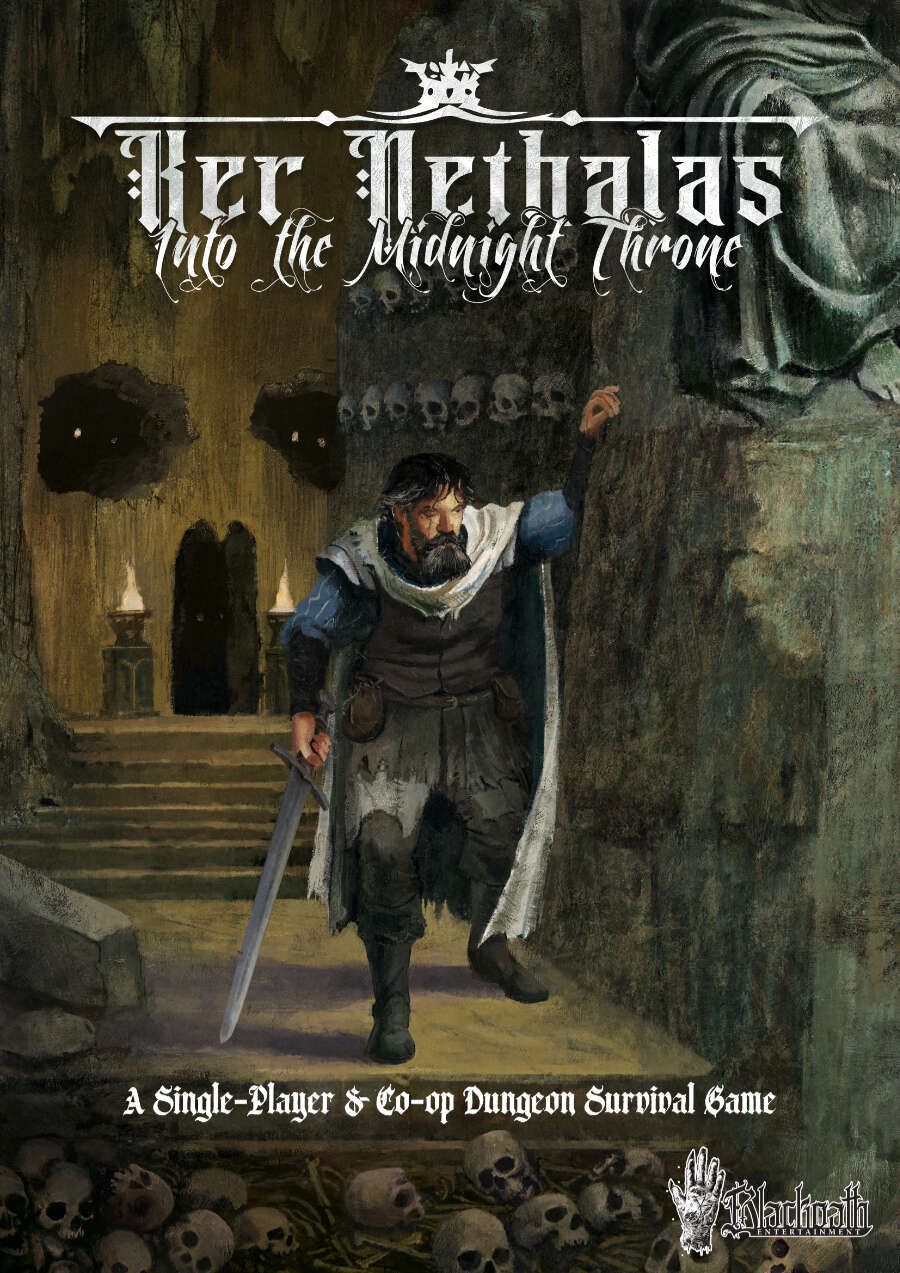Thoughts on Ker Nethalas
After seeing some YouTube playthroughs, I picked up a copy of Ker Nethalas: Into the Midnight Throne. This is a solo dungeon crawl game, meaning no in-town adventures, dungeon factions, or side quests. Players start off with a character that somehow survived execution and has been dropped into a necropolis. It uses a d100 system for combat and other checks, and has a bit of mechanical heft to it. (Due to that, I’m not posting a log of my first playthrough as I made a lot of mistakes, though I learned from them.)
 Cover of Ker Nethalas: Into the Midnight Throne
Cover of Ker Nethalas: Into the Midnight Throne
After just one run, these are my thoughts so far. (This isn’t a real review, but represents my initial impression of the game.)
The text has some very minor grammatical and usage issues (e.g. doors “closed” versus “locked”), likely due to the fact that the author’s primary language isn’t English. Generally this only presents a mild distraction, but it could have used an editor (none are listed in the credits) to avoid confusion here and there.
Once I got the hang of the dungeon stocking procedure, I found it managed a lot of issues I’ve had with other games (particularly in my OD&D solo games). Every room or corridor has a chance of an encounter (higher in rooms), and every monster (that I’ve seen thus far) has a general type of treasure such as Spoils, Resources, etc. If there’s no encounter in a room, there will be an event instead. And regardless, there’s a chance of scavenging some things after the encounter or event. Events include a lot of things, including traps and such.
The procedure accommodates using an existing map if the player prefers not to generate one during play. In fact, the starting “domain” (dungeon) uses a Dyson Logos map in exactly this way, but the book also has some simple geomorphs.
Procedural play as defined in this game does not need any sort of oracle, whether closed or open. There are lots of tables but at no point do you need to go roll to answer some odd question you came up with. In that way, this is a bit more board game like. (This isn’t a bad thing at all, as it does indeed give me the experience I wanted in that regard!)
The lowest “level” (this isn’t really a thing) enemies are still very dangerous. In this first run, a solo zombie (“Flesh Eater”) grappled my character, eventually crushing me to death because I couldn’t break free of its grasp. (Note that the default starting dungeon has a limited range of enemies, and those are the ones I’m considering “low level” for the purpose of this discussion.)
The game uses some existing familiar mechanics (d100 blackjack-style roll under, both attacker and defender roll, etc.) but in some cases, I don’t understand why. For example, damage rolls are translated using a “Scarlet Heroes” like table, but since KN doesn’t maintain compatibility with other material, this doesn’t make sense to me. The game uses usage dice in some abstract situations, such as the tension die to add more events, but not in other concrete ones, such as the fact that light sources last a definite number of rooms. I suspect this is due to the difference between abstract and concrete usage, but I plan to analyze it a bit more comprehensively.
In any case, I will be doing another playthrough soon that will hopefully get a bit further. I plan to post a session log from it, and maybe it will even help me figure out answers to a few of the questions above as well!

